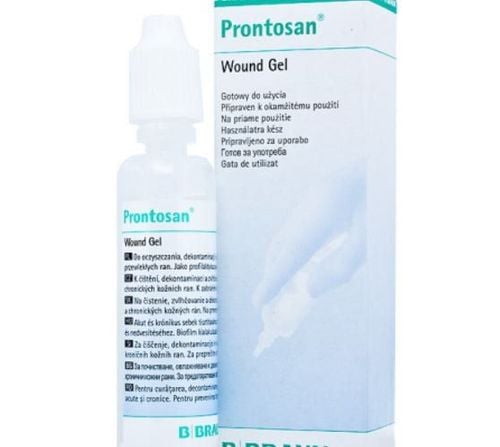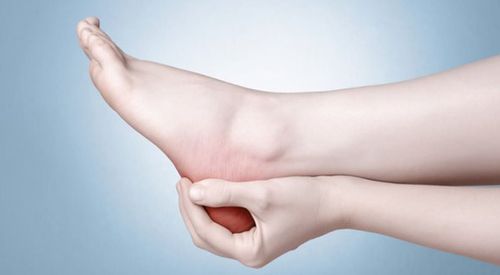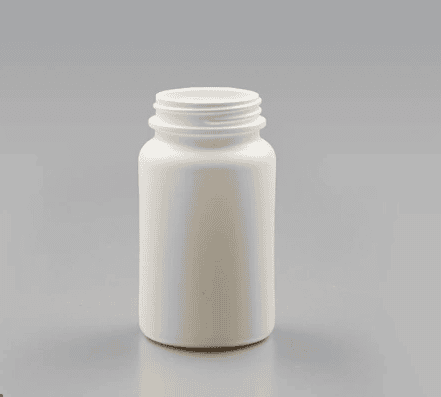This is an automatically translated article.
Pressure ulcers are easy to appear if the patient is not properly cared for. Treating pressure ulcers is not an easy task and is still difficult. Attention should be paid to steps in the care of patients with pressure ulcers to prevent ulceration from occurring.1. What is a pressure ulcer?
A pressure sore or a pressure ulcer is a sore that results from the condition of remaining in a fixed position for a long period of time, usually due to a long hospital stay for a serious or chronic medical condition. The cause of ulcers is lack of blood to nourish due to pressure. Factors that are likely to determine the severity of pressure ulcers include local friction, skin moisture, pain sensation, patient care, and nutritional status of the patient. .Currently, the world has applied the spreadsheet to classify the risk of pressure ulcers, from measuring the decision to use supportive means such as water mattress to relieve pressure. Pressure ulcers are divided into 4 different stages from mild to severe including:
Lesions from the epidermis to the epidermis: The skin is light red but harder than the surrounding skin. Injury to the subcutaneous layer: Loss of part of the epidermis, ulcerative appearance with dry bottom, usually no necrotic lesions. Injury to the fat layer: Little yellow necrotic tissue is observed at the bottom of the ulcer, the fat layer is visible. Injury spreads to surrounding soft tissues such as tendons, muscles, bones. The frequency of clinical pressure ulcers ranges from 3 to 30%. The most common places where pressure ulcers appear are the sacrum, ankles, heels, occipital bones, etc. Pressure ulcers alone don't bring too much danger, but the complications caused by it. The results can be life-threatening such as osteomyelitis, sepsis, septic shock or exhaustion, and increase the length of hospital stay.
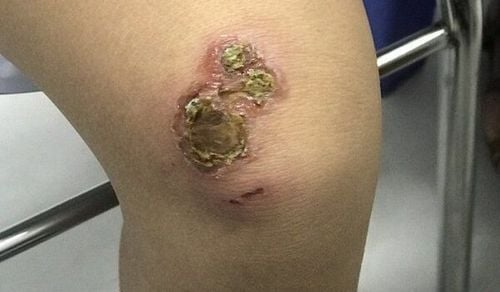
Nguyên nhân gây ra các vết loét là do thiếu máu đến nuôi dưỡng do áp lực tì đè
2. Risk factors for pressure ulcers
Pressure ulcers are caused by pressure on the skin for a long time, causing lack of blood to nourish the skin. Therefore, pressure ulcers are more likely to appear in the following subjects:
Patients with paralysis of the lower limbs or hemiplegia due to injuries to the spinal cord, spine, cerebrovascular accident or other diseases related to pressure ulcers. related to the central nervous system or peripheral nerves must lie in place for a long time. Patients in a coma, mechanical ventilation in the intensive care unit The elderly are exhausted, have broken bones, have to lie down for a long time.
3. Diagnosis and evaluation of pressure ulcers
Diagnosing a pressure sore shouldn't be too difficult. Observe the skin in places where there is direct pressure between the bone and the underlying hard surface, most commonly the sacral bone, can see red congestive skin in the early stages or obvious ulcers, with or without accompanying necrosis. Depending on the different stages, a pressure ulcer can appear with different characteristics and affected areas.
It is necessary to evaluate each patient with a pressure ulcer well on characteristics such as the patient's risk factors, size, stage, depth, presence of necrosis or not, and monitor the stage of infection. infection or other complications. When a pressure ulcer does not resolve with standard care and treatment, a histological biopsy of the ulcer should be performed to determine its histological nature and distinguish it from other possible malignancies. happen.
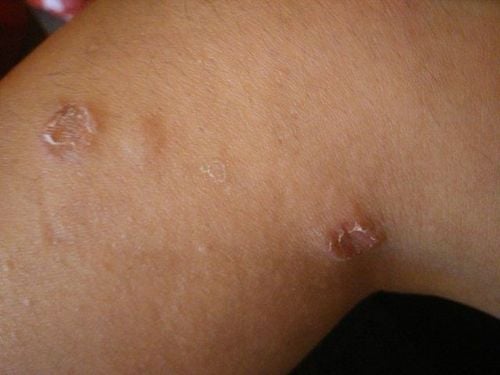
Chẩn đoán một vết loét do tì đè không gặp quá nhiều khó khăn
4. Measures to treat pressure ulcers
Treatment of pressure sores should focus on two goals including accelerating wound healing and preventing its complications. In order for pressure sores to heal quickly, pieces of necrotic tissue or pus and secretions need to be removed. Use topical or oral medications depending on the severity of the damage. Analgesics, anti-inflammatory drugs and antibiotics are groups of drugs that are often applied in combination in clinical practice. Regular wound cleaning care not only helps the ulcer heal quickly, but also prevents its serious complications. The ulcer should be washed with physiological saline or diluted antiseptic solution such as povidine iodine.
Changing positions often for the patient helps reduce pressure due to pressure. Maintain good nutrition, ensure adequate supply of calories and nutrients, promote wound healing. Today, with the emergence of many new techniques, the treatment of pressure ulcers can be carried out with a few supportive tools such as a negative pressure suction machine. This media helps to reduce the edema between the interstitial tissues and reduce the bacterial load, increases the wound surface tension which helps to activate the proteolysis and granulation tissues, increases blood flow to the lesion and shrinks the wound. injury on the spot.
Surgery is also a method to help treat pressure ulcers with the task of filtering the necrotic tissue and making the flap cover the ulcer area, increasing the blood supply from the muscle flaps. Direct suturing of the ulcer is not recommended due to the removal of dead space underneath.
In terminally ill patients with severe disease, treatment focuses only on steps to relieve pain such as dressing changes and daily washing of the wound. The goal of cure and ulcer healing is no longer a priority.

Điều trị vết loét do tì đè cần tập trung vào hai mục tiêu bao gồm thúc đẩy nhanh quá trình lành vết thương và dự phòng biến chứng của nó
5. Measures to prevent pressure ulcers
Pressure ulcers or pressure sores are not easy to treat and heal completely, so the prevention of pressure ulcers plays a very important role. Effective prevention of pressure ulcers helps patients avoid a lot of pain and helps speed up the treatment of the main disease. The application of measures to prevent pressure ulcer complications depends on the skill and attitude of the person directly caring for the patient. Some of the measures that need to be introduced and applied include:
Encourage or assist the patient to roll over and change position frequently. Some supportive devices such as water mattress or electric bed should be selected. The patient will be passively changed position according to their movement. Take care of the skin, especially the areas prone to pressure, clean and dry. Moisture-absorbing talcum powders can be used to achieve this goal. Always remember to provide enough energy and nutrients for the patient. Nutrient deficiencies slow the healing process, lead to longer hospital stays and increase the risk of developing pressure ulcers. To register for examination and treatment at Vinmec International General Hospital, you can contact Vinmec Health System nationwide, or register online HERE.
MORE:
Skin ulcers in the elderly Learn about aphthous ulcers What you need to know about mouth ulcers caused by chemotherapy





